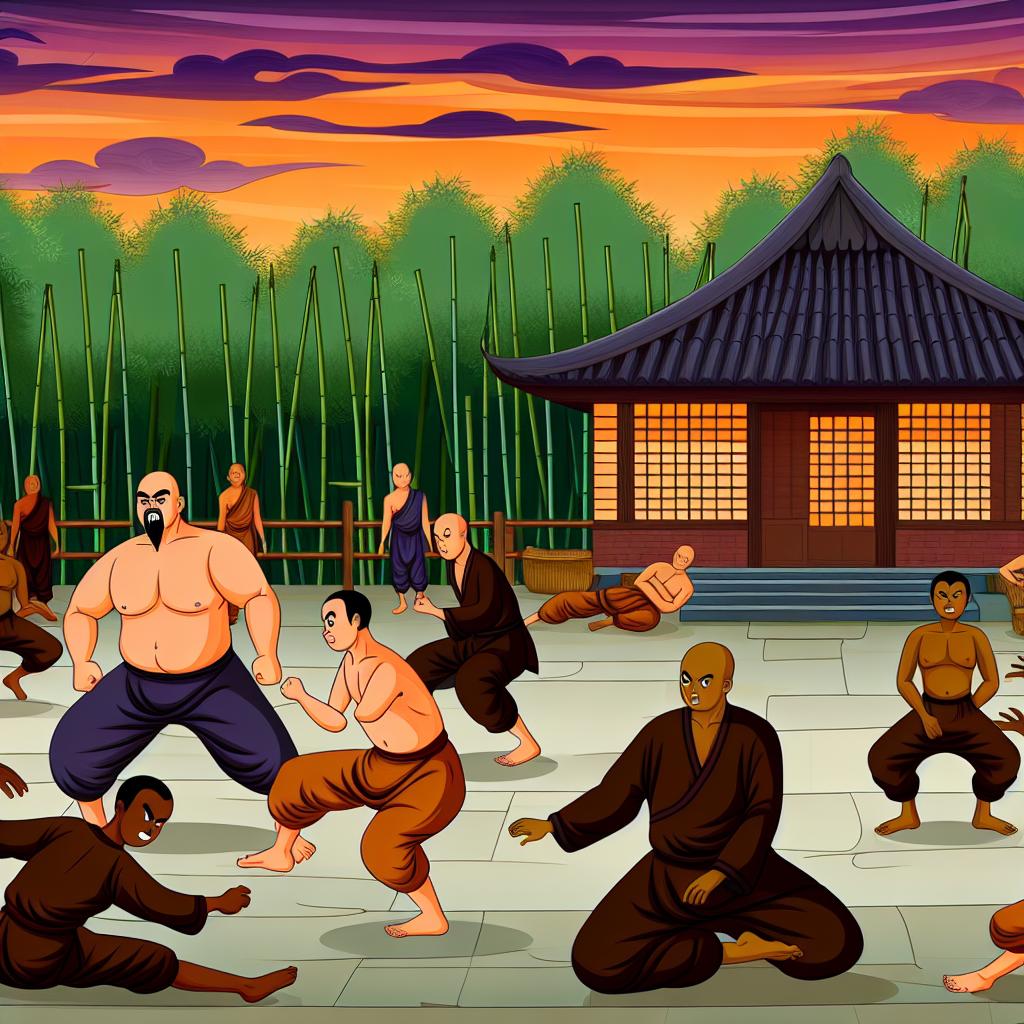
Introduction to Shaolin Training in “Kung Fu”
The classic television series “Kung Fu,” which aired in the 1970s, showcased a unique blend of adventure and philosophical introspection. At the heart of its narrative was Shaolin training—a profound aspect of Chinese martial arts and culture. The show’s protagonist, Kwai Chang Caine, portrayed by David Carradine, embodied the essence of Shaolin teachings, combining martial prowess with serene wisdom.
Historical Context of Shaolin Training
Shaolin training is deeply rooted in Chinese martial arts history, with origins tracing back to the Shaolin Monastery in Henan Province, China. This Monastery became synonymous with intense martial arts training and spiritual cultivation, having played a central role in cultivating the skills of countless practitioners over centuries. This training encompasses not only physical exercises and martial techniques but also mental and spiritual development. Within the sacred grounds of the monastery, monks fine-tuned their martial arts skills while also engaging in meditation and other mental disciplines to fortify their spirits. Traditionally, Shaolin monks underwent rigorous regimens, crafted to strengthen their bodies and sharpen their minds. These practices often covered meditation, qigong, and intensive martial arts training. The rigorous and disciplined approach taken in these parts of their regimen was not just about achieving physical strength or agility but also to prepare the practitioner spiritually and mentally for any challenge.
Depiction of Shaolin Principles in “Kung Fu”
In “Kung Fu,” Caine’s journey exemplifies the core principles of Shaolin training. The show’s producers skillfully depicted Shaolin philosophies such as discipline, humility, and inner peace through Caine’s character. Caine’s presence in the Shaolin Monastery instilled in him a profound sense of balance between aggression and compassion—an essential trait in traditional Shaolin teachings. Through his interactions and the challenges faced, viewers encounter an individual who has mastered self-control and enlightenment, thus serving as a stoic hero figure in the storylines.
The series often illustrated how Caine applies these principles in practical and moral dilemmas, exhibiting restraint and understanding, even when faced with violence or injustice. This portrayal aligns significantly with the Zen Buddhist elements of Shaolin philosophy, emphasizing non-violence and the strength found in stillness and reflection. These elements were central to the Shaolin way of life and taught the importance of finding peace and tranquility even in chaotic situations. While Caine was a martial artist skilled in combat, he often demonstrated that real strength lay in solving problems through wisdom and understanding, rather than through force alone.
Training Techniques Highlighted
“Kung Fu” highlighted various training techniques emblematic of the Shaolin tradition. The show frequently depicted Caine engaging in exercises that emphasized agility, strength, and flexibility—key components of martial arts proficiency. These techniques not only underscored physical fitness but also discipline and mental fortitude. The training regimens Caine underwent were not merely for building martial skills, but they reflected a holistic approach to improving the body, mind, and soul. Viewers witnessed exercises like the horse stance, breathing control, and intricate forms that mirrored authentic Shaolin practices. Such exercises were shown to play a vital role in perfecting martial arts skills while instilling an inner calmness and enhancing focus.
The horse stance, for example, not only built leg strength and endurance but also trained practitioners in stability and balance—attributes that were crucial in combat scenario’. Breathing exercises reflected the importance of qigong, a practice aimed at cultivating energy flow, which was integral to martial effectiveness and longevity. Intricate forms, which might have seemed like dances to the uninitiated, were deeply tied to the practical aspects of combat maneuvers, also serving to imprint muscle memory and coordination. These training regimens cultivated a formidable martial artist who found strength in both body and mind.
Conclusion
“Kung Fu” played a significant role in popularizing Shaolin training and philosophy in the Western world. By integrating these elements into Caine’s character and narrative arcs, the series offered audiences not just thrilling martial arts sequences but also a deeper understanding of the mental and spiritual components of the Shaolin tradition. Its unique blend of action and philosophy helped usher in an era where martial arts were not merely seen as combative, but as a means for personal growth, enlightenment, and virtue. For more detailed insights into the historical context and influence of Shaolin practices, consider exploring comprehensive studies on Chinese martial arts history or visiting dedicated cultural institutions online.
The influence of the series thus extended beyond entertainment; it became a window through which the West gained an appreciation for Eastern martial arts traditions. It nudged audiences towards a newfound interest in learning about the balance of mind, body, and spirit, implemented through martial arts. The integration of philosophy with combat arts eventually influenced the perception of practitioners worldwide, fostering a deeper respect for martial arts as a holistic discipline with its roots in spiritual and philosophical traditions.
This article was last updated on: May 3, 2025

